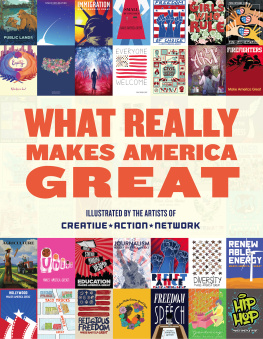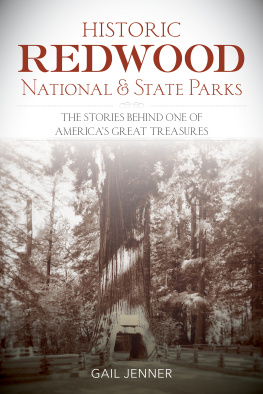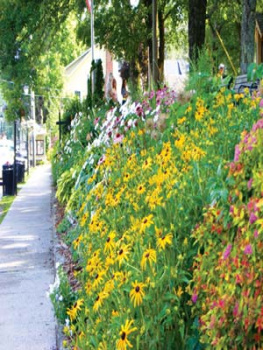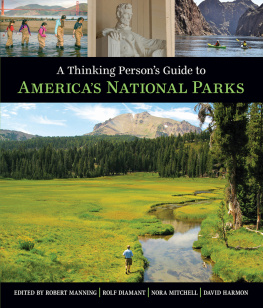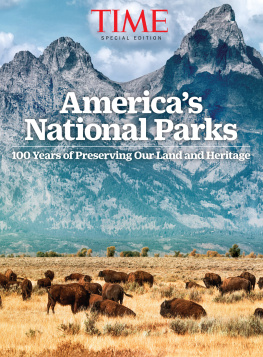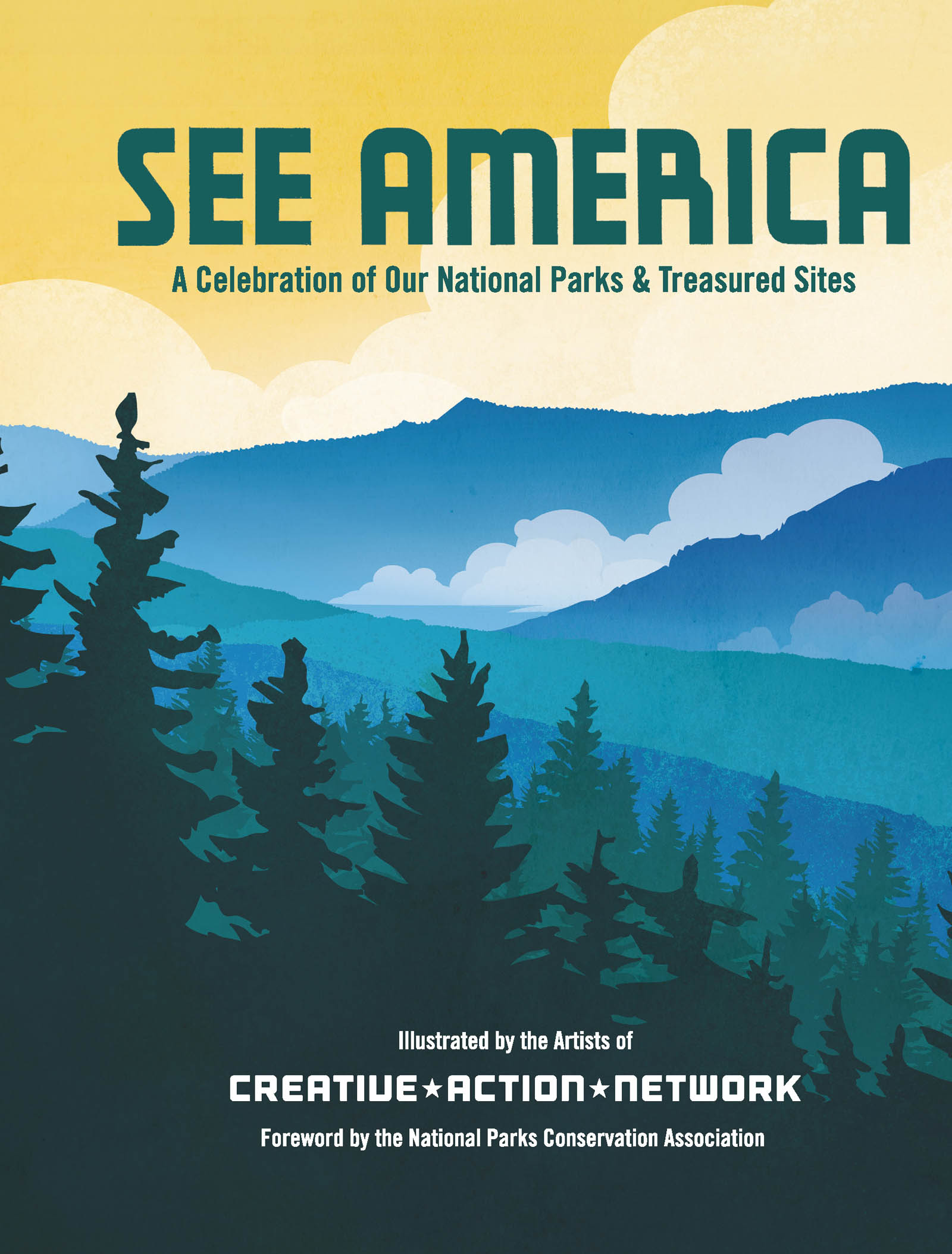

There is nothing so American as our national parks. The scenery and the wildlife are native. The fundamental idea behind the parks is native. It is, in brief, that the country belongs to the people, that it is in process of making for the enrichment of the lives of all of us. The parks stand as the outward symbol of the great human principle.
President Franklin D. Roosevelt
Copyright 2016 by Creative Action Inc.
All rights reserved. No part of this book may be reproduced in any form
without written permission from the publisher.
ISBN: 978-1-4521-4925-5 (epub, mobi)
Library of Congress Cataloging-in-Publication Data available.
ISBN: 978-1-4521-4898-4 (hc)
Book design by Aaron Perry-Zucker
Cover illustration by Jon Cain
1% of the sale of this book will support National Parks Conservation Association through 2017. Each artist featured received a portion of the proceeds from each sale.
Chronicle Books LLC
680 Second Street
San Francisco, California 94107
www.chroniclebooks.com

Illustrations by Department of the Interior, National Park Service, ca. 1938
FOREWORD
Before the National Park Service was established in 1916, artists were inspiring our nation to dream of natural spaces everyone could enjoy. William Henry Jacksons first photographs of Mammoth Hot Springs put Yellowstone on the map, and Ansel Adamss stunning photos of El Capitan and Half Dome have come to define Yosemite. The first people to persuade Congress to set aside national parks were painters like Thomas Moran and Alfred Bierstadtartists whose enormous canvases still hang on the walls of Washington, D.C.s museums and federal offices more than 100 years later.
Not long after our National Park Service was created in 1916, President Franklin Delano Roosevelts New Deal and its Work Projects Administration (WPA) put the nations artists to work creating a series of See America posters, educating and inspiring the wider public about our national parks. Artists of the WPA worked in government art studios, pushing the boundaries of printmaking with the cutting-edge technologies of the day, like serigraphy and color printing. They distributed their creations in schools, post offices, and other federal buildings around the country.
Many of todays artists paint with pixels and post their works to social media; a small creative community today can work at the scale and impact that used to be reserved only for government agencies. My organization, National Parks Conservation Association, the oldest and largest non-profit organization advocating for our national parks, has been fortunate enough to ride that tide thanks to our partnership with the Creative Action Network. The See America project has reminded Americans just how much we value these places.
The Creative Action Network has not only built a community of artists, theyve helped us foster community in and around national parks. By hosting exhibits throughout the country, theyve taken the powerful images off the screen and put them on the wall, where people can gather and enjoy them over a drink and a story. The See America project has given us an opportunity to engage young and diverse audiencespeople who will play a key role in our parks second century.
We hope the images in this book will inspire the next generation of park activists, whether that activism involves volunteering at a nearby park, writing a letter to the editor of their local paper, contacting a member of Congress, or bringing friends to a park so they can experience firsthand what talented artists have captured on these pages.
Theresa Pierno,
Chief Operating Officer
National Parks Conservation Association
Washington, D.C.

Illustrations by Matt Brass, Brixton Doyle, Alyssa Winans, Luis Prado
INTRODUCTION
As long there have been advocates committed to the conservation of the American landscape, there have been artists harnessing their talents for that same cause. The ongoing collaboration between creativity and conservation shaped both our physical landscape and our national identity in a virtuous cycle we set out to continue with our revival of the See America project.
During the Great Depression, as part of President Roosevelts New Deal, the Work Projects Administration put the nation to work building bridges and roads, teaching in schools and libraries, constructing post offices and government buildings, and, controversially at the time, making art. The Poster Division of the WPA was one of the first U.S. government programs to directly support the arts, producing thousands of beautifully designed posters from 1936 to 1943 on a range of issues from healthcare and education to road safety. Our favorite series, the See America posters, were designed to get people to do just thatget out and see America, particularly all the relatively new national parks that had been established in 1916. The project put a generation of artists to work, and the bold style and sheer size of their collected works has had a lasting influence on the American aesthetic and in the minds of artists and designers today.
It is in that spirit that we partnered with the National Parks Conservation Association to revive the See America project for a new generation of artists, and a new generation of parks, in celebration of the 2016 centennial of the National Park Service. In 2014, we put out an open call to artists and designers around the world, inviting them to design and share posters depicting their favorite parks with the same See America banner used by the artists of the WPA. Anyone can contribute, and all designs are available for purchase online as posters, T-shirts, and more, to support these artists work. At the time of this writing, we have received nearly 1,000 designs, but unfortunately could not fit all of them into this book. In this selection of 75 locations featuring some of our top designs, we have done our best to represent the wide range of diversity in our parks and the equally inspiring diversity of creative interpretations for them. To see the rest of the collection, or to contribute your own design, we encourage you to visit www.SeeAmericaProject.com.
Like the WPA before us, we hope the See America project will inspire a new generation to visit, preserve, and protect our countrys natural treasures and shared cultural heritage. Thank you to all of the artists who have contributed their time and their talents to the See America project, and to all of the tireless advocates who protect and cherish our parks.
Aaron Perry-Zucker and Max Slavkin
Cofounders
Creative Action Network
San Francisco

WASHINGTON MONUMENT
Established: 1848 Washington, D.C.

Next page

